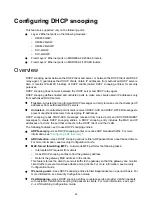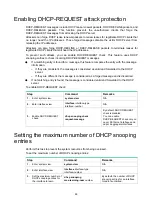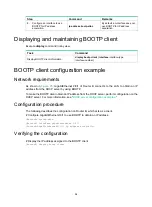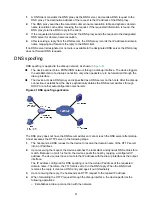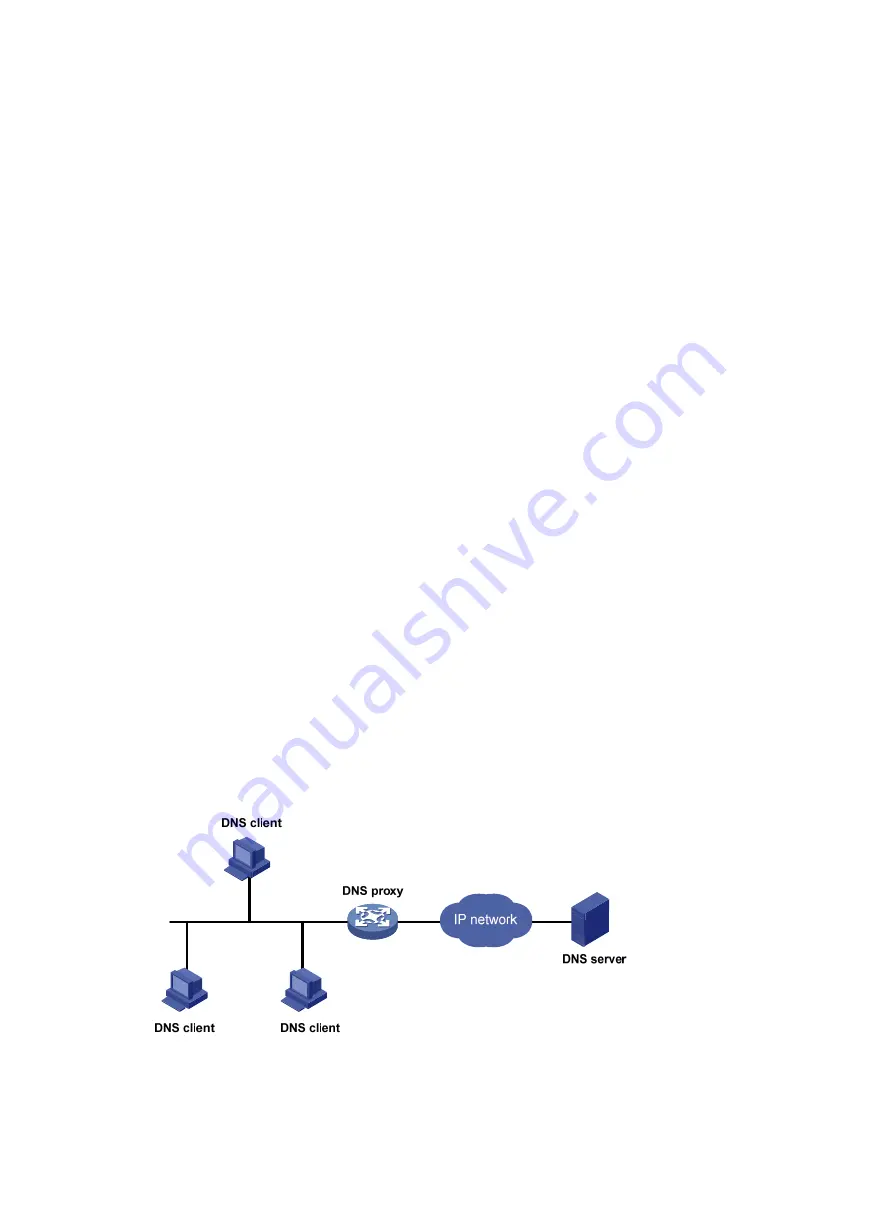
96
Dynamic domain name resolution allows the DNS client to store latest DNS entries in the dynamic
domain name cache. The DNS client does not need to send a request to the DNS server for a
repeated query within the aging time. To make sure the entries from the DNS server are up to date, a
DNS entry is removed when its aging timer expires. The DNS server determines how long a mapping
is valid, and the DNS client obtains the aging information from DNS responses.
DNS suffixes
You can configure a domain name suffix list so that the resolver can use the list to supply the missing
part of an incomplete name.
For example, you can configure
com
as the suffix for aabbcc.com. The user only needs to enter
aabbcc to obtain the IP address of aabbcc.com. The resolver adds the suffix and delimiter before
passing the name to the DNS server.
The name resolver handles the queries based on the domain names that the user enters:
•
If the user enters a domain name without a dot (.) (for example, aabbcc), the resolver considers
the domain name as a host name. It adds a DNS suffix to the host name before performing the
query operation. If no match is found for any host name and suffix combination, the resolver
uses the user-entered domain name (for example, aabbcc) for the IP address query.
•
If the user enters a domain name with a dot (.) among the letters (for example, www.aabbcc),
the resolver directly uses this domain name for the query operation. If the query fails, the
resolver adds a DNS suffix for another query operation.
•
If the user enters a domain name with a dot (.) at the end (for example, aabbcc.com.), the
resolver considers the domain name an FQDN and returns the successful or failed query result.
The dot at the end of the domain name is considered a terminating symbol.
The device supports static and dynamic DNS client services.
If an alias is configured for a domain name on the DNS server, the device can resolve the alias into
the IP address of the host.
DNS proxy
As shown in
, the DNS proxy performs the following operations:
•
Forwards the request from the DNS client to the designated DNS server.
•
Conveys the reply from the DNS server to the client.
The DNS proxy simplifies network management. When the DNS server address is changed, you can
change the configuration only on the DNS proxy instead of on each DNS client.
Figure 40 DNS proxy application
A DNS proxy operates as follows:


